
Paul Gauguin Painting Reproductions 2 of 8
1848-1903
French Post-Impressionist Painter
183 Gauguin Paintings
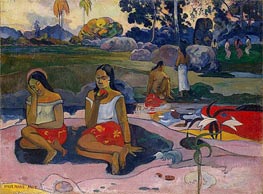
Sacred Spring: Sweet Dreams (Nave nave moe) 1894
Oil Painting
$962
$962
Canvas Print
$70.78
$70.78
SKU: GAP-3014
Paul Gauguin
Original Size: 74 x 100 cm
The State Hermitage Museum, St. Petersburg, Russia
Paul Gauguin
Original Size: 74 x 100 cm
The State Hermitage Museum, St. Petersburg, Russia
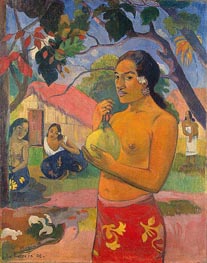
Where Are You Going (Eu haere ia oe) 1893
Oil Painting
$946
$946
Canvas Print
$73.34
$73.34
SKU: GAP-3015
Paul Gauguin
Original Size: 92.5 x 73.5 cm
The State Hermitage Museum, St. Petersburg, Russia
Paul Gauguin
Original Size: 92.5 x 73.5 cm
The State Hermitage Museum, St. Petersburg, Russia

Pastorales Tahitiennes 1892
Oil Painting
$868
$868
Canvas Print
$73.17
$73.17
SKU: GAP-3016
Paul Gauguin
Original Size: 87.5 x 113.7 cm
The State Hermitage Museum, St. Petersburg, Russia
Paul Gauguin
Original Size: 87.5 x 113.7 cm
The State Hermitage Museum, St. Petersburg, Russia
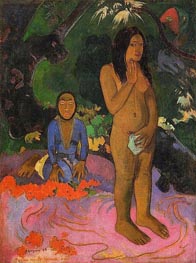
Parau na te varua ino (Words of the Devil) 1892
Oil Painting
$911
$911
Canvas Print
$69.42
$69.42
SKU: GAP-3017
Paul Gauguin
Original Size: 91.7 x 68.5 cm
National Gallery of Art, Washington, USA
Paul Gauguin
Original Size: 91.7 x 68.5 cm
National Gallery of Art, Washington, USA
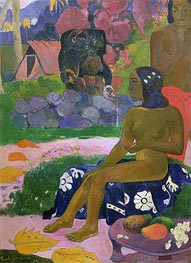
Vairaumati Tei Oa (Her Name is Vairaumati) 1892
Oil Painting
$911
$911
Canvas Print
$67.89
$67.89
SKU: GAP-3018
Paul Gauguin
Original Size: 91 x 68 cm
Pushkin Museum of Fine Arts, Moscow, Russia
Paul Gauguin
Original Size: 91 x 68 cm
Pushkin Museum of Fine Arts, Moscow, Russia
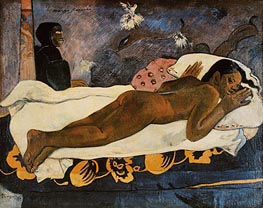
Manao Tupapau (Spirit of the Dead Watching) 1892
Oil Painting
$926
$926
Canvas Print
$73.85
$73.85
SKU: GAP-3019
Paul Gauguin
Original Size: 73 x 92 cm
Albright-Knox Art Gallery, Buffalo, USA
Paul Gauguin
Original Size: 73 x 92 cm
Albright-Knox Art Gallery, Buffalo, USA
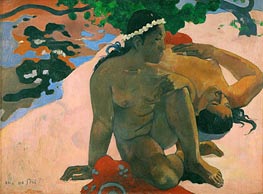
Aha oe Feii (What Are You Jealous) 1892
Oil Painting
$882
$882
Canvas Print
$69.08
$69.08
SKU: GAP-3020
Paul Gauguin
Original Size: 66 x 89 cm
Pushkin Museum of Fine Arts, Moscow, Russia
Paul Gauguin
Original Size: 66 x 89 cm
Pushkin Museum of Fine Arts, Moscow, Russia
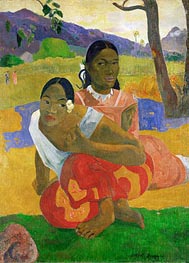
Nafeaffaa Ipolpo (When Will You Marry) 1892
Oil Painting
$882
$882
Canvas Print
$67.04
$67.04
SKU: GAP-3021
Paul Gauguin
Original Size: 105 x 77.5 cm
Kunstmuseum, Basel, Switzerland
Paul Gauguin
Original Size: 105 x 77.5 cm
Kunstmuseum, Basel, Switzerland
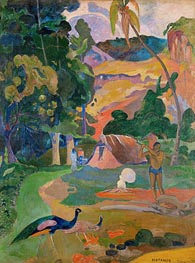
Matamoe (Landscape with Peacocks) 1892
Oil Painting
$922
$922
Canvas Print
$69.08
$69.08
SKU: GAP-3022
Paul Gauguin
Original Size: 115 x 86 cm
Pushkin Museum of Fine Arts, Moscow, Russia
Paul Gauguin
Original Size: 115 x 86 cm
Pushkin Museum of Fine Arts, Moscow, Russia
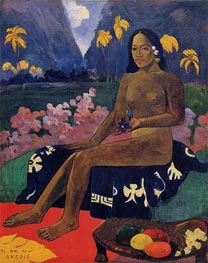
Te Aa No Areois (The Seed of Areoi) 1892
Oil Painting
$905
$905
Canvas Print
$72.14
$72.14
SKU: GAP-3023
Paul Gauguin
Original Size: 92 x 72 cm
Museum of Modern Art, New York, USA
Paul Gauguin
Original Size: 92 x 72 cm
Museum of Modern Art, New York, USA
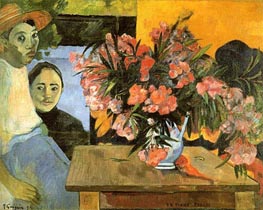
Te Tiare Arani (Flowers of France) 1891
Oil Painting
$922
$922
Canvas Print
$73.34
$73.34
SKU: GAP-3024
Paul Gauguin
Original Size: 72 x 92 cm
Pushkin Museum of Fine Arts, Moscow, Russia
Paul Gauguin
Original Size: 72 x 92 cm
Pushkin Museum of Fine Arts, Moscow, Russia

Faaturuma (Melancholy) 1891
Oil Painting
$855
$855
Canvas Print
$67.72
$67.72
SKU: GAP-3025
Paul Gauguin
Original Size: 94 x 68.2 cm
Nelson-Atkins Museum of Art, Kansas City, USA
Paul Gauguin
Original Size: 94 x 68.2 cm
Nelson-Atkins Museum of Art, Kansas City, USA
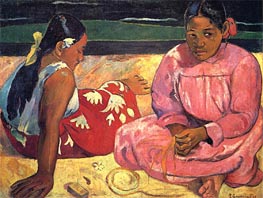
Two Woman on the Beach 1891
Oil Painting
$898
$898
Canvas Print
$71.12
$71.12
SKU: GAP-3026
Paul Gauguin
Original Size: 69 x 91.5 cm
Musee d'Orsay, Paris, France
Paul Gauguin
Original Size: 69 x 91.5 cm
Musee d'Orsay, Paris, France
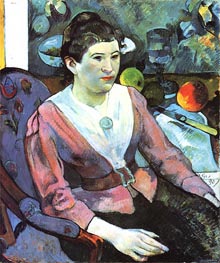
Portrait of a Woman with Cezanne Still Life 1890
Oil Painting
$853
$853
Canvas Print
$78.79
$78.79
SKU: GAP-3027
Paul Gauguin
Original Size: unknown
Art Institute of Chicago, Illinois, USA
Paul Gauguin
Original Size: unknown
Art Institute of Chicago, Illinois, USA

Haystacks in Brittany (The Potato Field) 1890
Oil Painting
$811
$811
Canvas Print
$74.36
$74.36
SKU: GAP-3028
Paul Gauguin
Original Size: 74.3 x 93.6 cm
National Gallery of Art, Washington, USA
Paul Gauguin
Original Size: 74.3 x 93.6 cm
National Gallery of Art, Washington, USA

Houses in le Pouldu 1890
Oil Painting
$639
$639
Canvas Print
$73.17
$73.17
SKU: GAP-3029
Paul Gauguin
Original Size: 92 x 73 cm
Staatliche Kunsthalle, Karlsruhe, Germany
Paul Gauguin
Original Size: 92 x 73 cm
Staatliche Kunsthalle, Karlsruhe, Germany
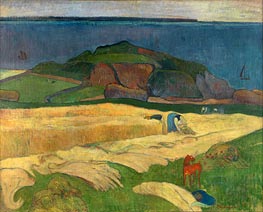
Seaside Harvest, Le Pouldu 1890
Oil Painting
$621
$621
Canvas Print
$75.55
$75.55
SKU: GAP-3030
Paul Gauguin
Original Size: 73 x 92.1 cm
Tate Gallery, London, UK
Paul Gauguin
Original Size: 73 x 92.1 cm
Tate Gallery, London, UK
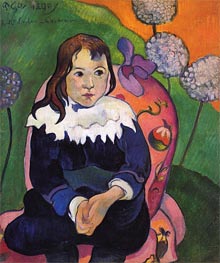
M. Loulou 1890
Oil Painting
$691
$691
Canvas Print
$78.61
$78.61
SKU: GAP-3031
Paul Gauguin
Original Size: 55.2 x 46.3 cm
Barnes Foundation, Merion, USA
Paul Gauguin
Original Size: 55.2 x 46.3 cm
Barnes Foundation, Merion, USA
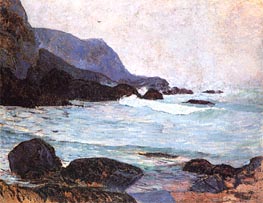
The Coast of Bellangenay c.1890
Oil Painting
$604
$604
SKU: GAP-3032
Paul Gauguin
Original Size: unknown
Springfield Museum of Art, Ohio, USA
Paul Gauguin
Original Size: unknown
Springfield Museum of Art, Ohio, USA
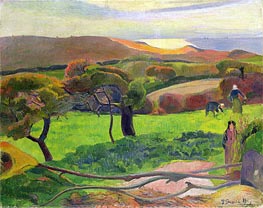
Breton Landscape - Fields by the Sea (Le Pouldu) 1889
Oil Painting
$916
$916
Canvas Print
$74.19
$74.19
SKU: GAP-3033
Paul Gauguin
Original Size: 72.5 x 91 cm
National Museum, Stockholm, Sweden
Paul Gauguin
Original Size: 72.5 x 91 cm
National Museum, Stockholm, Sweden
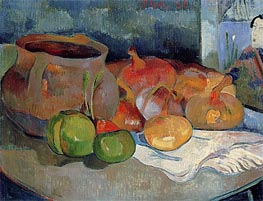
Still Life with Onions, Beetroot and a Print 1889
Oil Painting
$693
$693
SKU: GAP-3034
Paul Gauguin
Original Size: unknown
Private Collection
Paul Gauguin
Original Size: unknown
Private Collection

Still Life with Apples, Pear and Ceramic Jug 1889
Oil Painting
$579
$579
Canvas Print
$61.75
$61.75
SKU: GAP-3035
Paul Gauguin
Original Size: 28.6 x 36.2 cm
Fogg Art Museum at Harvard University, Massachusetts, USA
Paul Gauguin
Original Size: 28.6 x 36.2 cm
Fogg Art Museum at Harvard University, Massachusetts, USA
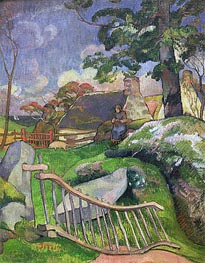
The Gate (The Swineherd) 1889
Oil Painting
$686
$686
Canvas Print
$72.83
$72.83
SKU: GAP-3036
Paul Gauguin
Original Size: 92.5 x 73 cm
Kunsthaus, Zurich, Switzerland
Paul Gauguin
Original Size: 92.5 x 73 cm
Kunsthaus, Zurich, Switzerland
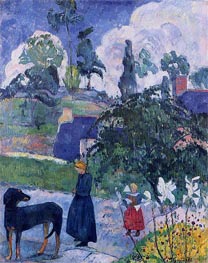
Among the Lilies 1889
Oil Painting
$686
$686
SKU: GAP-3037
Paul Gauguin
Original Size: unknown
Private Collection
Paul Gauguin
Original Size: unknown
Private Collection